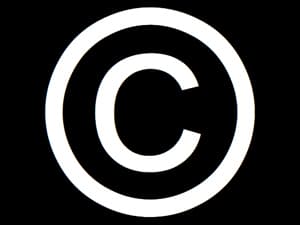There’s this misconception that anything on the internet is free for the taking. This just isn’t true. When you want to post an image, just going through a Google search isn’t good enough. You could put yourself at risk for future lawsuits, fines, and penalties just by downloading and then uploading an attractive image.

Even providing a link isn’t good enough.
There are plenty of good free images that are on the internet right now. Here’s how you can make sure those free images that you use online are actually “free” and won’t get you into trouble.
#1. Royalty-free isn’t actually “free.”
When an image is royalty-free, it means that you can use it without paying the owner of that image an ongoing payment for the rights to have it. In general, it allows you to have the picture on your site forever. What it doesn’t mean is that you can gain access to it for free. You might have to pay a fee, give the owner credit and a link, or follow a number of additional stipulations to be granted a usage license. If you don’t meet the conditions for use, then you’ve violated copyright law.
#2. Copyrights happen instantly.
The instant an image is created, a copyright is naturally assigned to it. This means the image cannot be used without the creator’s permission. Even if an image has been released to the public domain, there must be verbiage from the creator that is verifiable for such a release. Linking to the license for images is becoming a standard practice today to avoid trouble in this area, especially if the image is being used commercially.
#3. Fair use is not an excuse.
For fair use rules to apply, your site must meet some specific conditions. Your content must also meet some conditions. Writing a movie review on a website dedicated to movie reviews? Then a movie still makes sense and fair use may apply. Writing about how to use images appropriately and putting in a ton of images from Avengers 2? Probably not. Unless it’s a meme, that is. That’s a gray area you can choose to wade into if you wish.
#4. People in images have rights.
Personality rights are something that are often ignored and that’s a problem. If a person can be clearly identified in an image, then many places have laws which require you to get a release from that person to use their image. This includes celebrities unless the images are taken by you personally in a public space – and even then sometimes the use is prohibited. Best practice here: don’t use images with someone’s face unless you have the legal paperwork which allows it.
#5. Commercial licenses are different than personal licenses.
Do you have advertising on your blog? Then you’ve got a commercial business in the eyes of copyright law. This means you’ll need to use images that grant you commercial use to avoid trouble. Without this license, you could wind up owing royalties to someone even if you haven’t been paid from your advertising impressions or affiliate revenues. Always pay attention to the specific language of the license release to make sure trouble doesn’t find you.
Photograph or image ownership has become easier to track thanks to Google’s “Search Similar Images” command. This means copyright enforcement has become much more common. Just because you haven’t been caught doesn’t mean you’re in the clear – it just likely means your site isn’t popular enough to be in the top search results.
Whenever possible, use your own images. Fresh, unique content is always the best solution. If you need to use someone’s image, then make sure you have the specific rights to do so, include links for verification, and you will have a successful online experience.











Leave a Reply